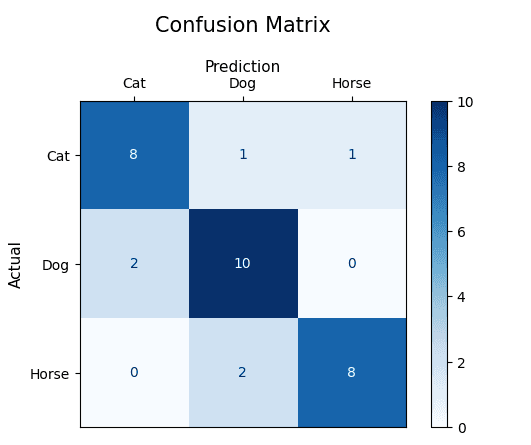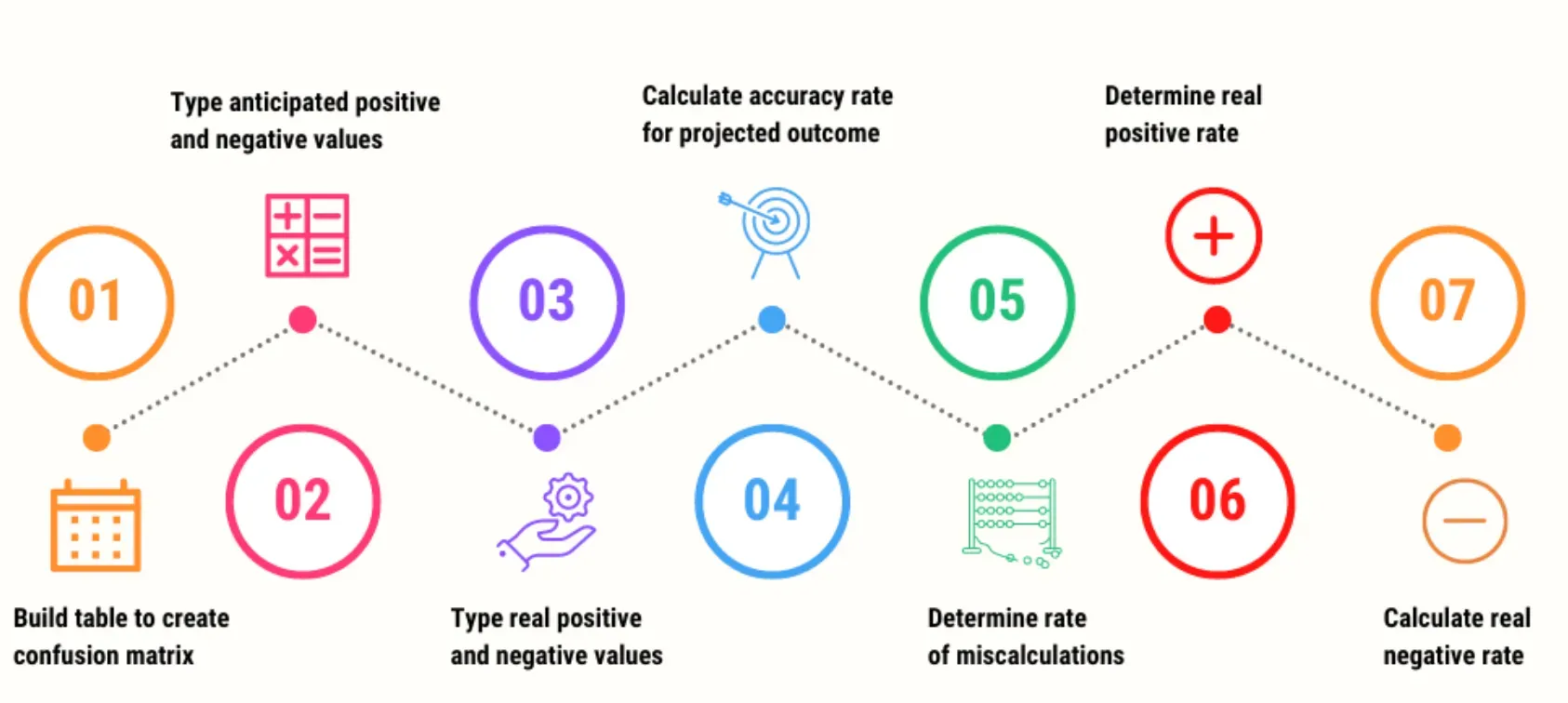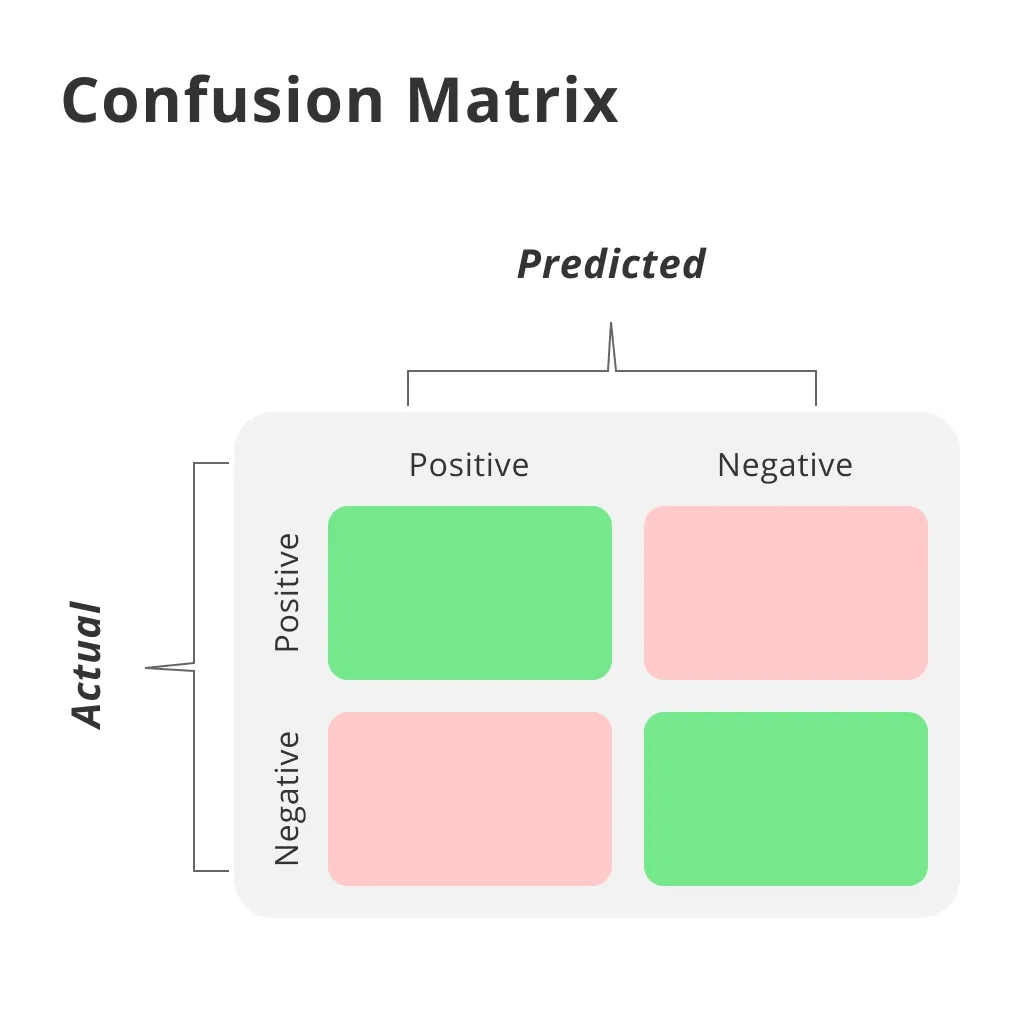What is a Confusion Matrix?
A confusion matrix, also known as an error matrix, is a specific table layout utilized in machine learning for visualization of the performance of an algorithm, typically a supervised learning one.
It is a pivotal tool in measuring the accuracy of a classification, which is simply predicting the category of a given dataset.
Origin of Confusion Matrix
The concept of confusion matrix was coined in the field of machine learning as it grew in popularity, offering a means to visually understand the performance of an algorithm.
Importance of Confusion Matrix
The key reason behind the importance of confusion matrix is that it provides a more detailed breakdown of how a classification model is performing, breaking down the performance into four parts namely: true positive, true negative, false positive and false negative.
Confusion Matrix in Supervised Learning
The role of confusion matrix is even more crucial in supervised learning, given its ability to effectively illustrate the effectiveness of an algorithm against a known set of results.
Understanding the Concepts of True Positive, True Negative, False Positive and False Negative
Each of these four components represent a crucial aspect of machine learning model's performance: correctly identified positives, correctly identified negatives, falsely identified positives and falsely identified negatives respectively.
Interpreting a Confusion Matrix
Interpreting a confusion matrix involves counting the number of correct and incorrect predictions, thus providing a more granular understanding of what is being classified correctly and what is failing.
Why Use a Confusion Matrix?
Now that we understand what a confusion matrix is, let's delve into why we use them.
The application of the confusion matrix extends far beyond just being a tool for machine learning. It offers a way to calculate numerous other metrics that are crucial in evaluating the performance of an algorithm.
- Calculating Accuracy: Accuracy is basically the measure of all correctly identified cases. It is calculated with the formula (TP+TN) / (TP+FP+FN+TN).
- Precision and Recall: Precision is the measure of identified true positives and recall is the ratio of true positives to the sum of true positives and false negatives.
- F1 Score: The F1 score is an equally weighted average of precision and recall. It is calculated via the formula 2 * (precision * recall) / (precision + recall).
- ROC Curve: The ROC curve is a graphical representation of the performance of a classification model. It plots two parameters: True Positive Rate (TPR) and False Positive Rate (FPR).
- AUC Score: Area Under the Curve (AUC) score is another performance metric that tells us about the ability of the model to classify positive and negative classes correctly.
Who Uses a Confusion Matrix?

Now we'll explore who applies the confusion matrix in their professional work.
Quite a variety of professionals use confusion matrices as a part of their work, such as Data Scientists, AI Engineers, Machine Learning Engineers, and Analysts, among others.
- Role in Data Science: Data Scientists use a confusion matrix as a tool to see how well their algorithms perform on a set of test data.
- Role in Machine Learning: For Machine Learning Engineers, a confusion matrix helps understand how algorithms are classifying different types of data.
- Role in AI Engineering: AI Engineers apply confusion matrix to the performance tuning of AI models, especially in the fine-tuning of classification problem-solving.
- Role in Analytics: In the field of Business and Data Analytics, a confusion matrix is used in predictive analytics to see how accurately the future trends are being predicted.
- Role in Healthcare: Even in Healthcare, a confusion matrix is utilized to predict the occurrence of certain diseases and assess the efficiency of predictive models.
When to Use a Confusion Matrix?

Having explored the 'Who', let's now delve into the 'When'. When should we use a confusion matrix in our projects?
The use of a confusion matrix is not bound to any specific stage of a project, yet there are certain scenarios where its use becomes crucial.
Model Development
During the development phase of a model, a confusion matrix can be used to check how well the model is classifying the data.
Model Validation
Confusion matrix is used to validate a model when it is tested with an unseen dataset.
Performance Tuning
It's used during the tuning phase of the algorithms to adjust the algorithm for better performance.
Comparison of Models
When comparing different models, a confusion matrix can provide a clear picture of each model's performance.
Problem-Solving
In scenarios where algorithms appear to work improperly or some misclassification is observed, a confusion matrix can help identify the issue.
How to Use a Confusion Matrix?
After 'when', let's understand 'how'. What are the steps involved in implementing and using a confusion matrix in machine learning?
The use of a confusion matrix involves a series of steps that can be followed to evaluate an algorithm's performance meticulously.
- Dataset Segregation: The dataset needs to be segregated into training and testing datasets.
- Model Development: A supervised learning classification model is developed on the training dataset.
- Model Prediction: The developed model is used to make predictions on the testing dataset.
- Construction of Confusion Matrix: A confusion matrix is constructed using the predicted and actual outcomes of the testing dataset.
- Performance Assessment: The performance of the model is assessed using the confusion matrix and various performance metrics are calculated.
Best Practices in Using Confusion Matrix

There are always best practices to follow in any field. Here are some when it comes to using a confusion matrix.
While confusion matrices are very helpful by nature, their effectiveness can be optimized even further by following some best practices.
- Proper Dataset Split: Ensure the dataset is appropriately divided between training and testing data.
- Continuous Monitoring: Keep an eye on the matrix post-model development to catch any drift in predictions.
- Equal Attention to All Quadrants: Don't focus solely on true positives and true negatives. The false predictions can provide valuable insights.
- Consideration of Business Objectives: The type of error we focus on can depend on the business objective. Sometimes, false negatives could be more harmful than false positives, or vice versa.
- Comparative Model Analysis: Use confusion matrix for comparing different models rather than just relying on it for individual model performance.
Challenges in Using Confusion Matrix
Every tool, technique or discipline comes with its set of challenges and Confusion Matrix is no different.
Throughout its application, one may encounter a number of challenges or issues, some of which are commonly reported in the data science community.
- Data Imbalance: An imbalanced dataset can lead to a misleading confusion matrix as the matrix might simply reflect the underlying class distribution.
- Interpretation Misunderstandings: At times, there can be some confusion in the interpretation of the confusion matrix, especially with false positives and false negatives.
- Ignoring the Cost of Misclassification: Different misclassifications can have different costs which is often overlooked while assessing the performance of a model.
- Oversimplification: In the case of multiple classes, the confusion matrix might oversimplify the results, thus masking certain issues.
- Misuse of Performance Metrics: There might be an undue emphasis on a particular metric, ignoring other potentially important metrics derived from the confusion matrix.
Latest Trends in Confusion Matrix

With trends being an integral part of technology, let's look at some of the latest trends in the field of Confusion Matrix.
As an integral part of machine learning, Confusion Matrix keeps evolving, and these are some of the most recent trends we're seeing in the industry.
Greater Emphasis on Precision-Recall
The data science community is moving towards a greater emphasis on precision and recall, as compared to just accuracy.
Dealing with Imbalanced Datasets
New methods are being devised to deal with the issue of imbalanced datasets to ensure confusion matrix is not biased.
Multi-Dimensional Confusion Matrix
Application of Multi-Dimensional Confusion Matrix is on the rise for dealing with multi-class datasets.
Integration with Other Tools
Tools like Python's Scikit-learn have integrated confusion matrix in their workflows.
Use in Deep Learning Models
The application of confusion matrix in complex deep learning models is becoming a trend in the industry.
Frequently Asked Questions (FAQs)
What Insights Can a Confusion Matrix Provide About a Classifier's Performance?
A confusion matrix provides detailed performance insights, such as true positives, false negatives, false positives, and true negatives.
Why Are Confusion Matrices Integral in Machine Learning?
Confusion matrices are integral for evaluating algorithm performance, offering a more nuanced view than overall accuracy, especially for imbalanced datasets.
How Does a Confusion Matrix Aid in Calculating Precision and Recall?
Precision and recall, key metrics for machine learning models, are derived directly from the four components (TP, FP, TN, FN) of a confusion matrix.
Can a Confusion Matrix Handle Multiclass Classification Problems?
Yes, confusion matrices can be expanded to handle multiclass problems, effectively displaying where the classification model is succeeding or failing.
Does a Confusion Matrix Help in Error Analysis?
Absolutely, by breaking down error types (false positives, false negatives), it aids in understanding specific error patterns, guiding improvements.

